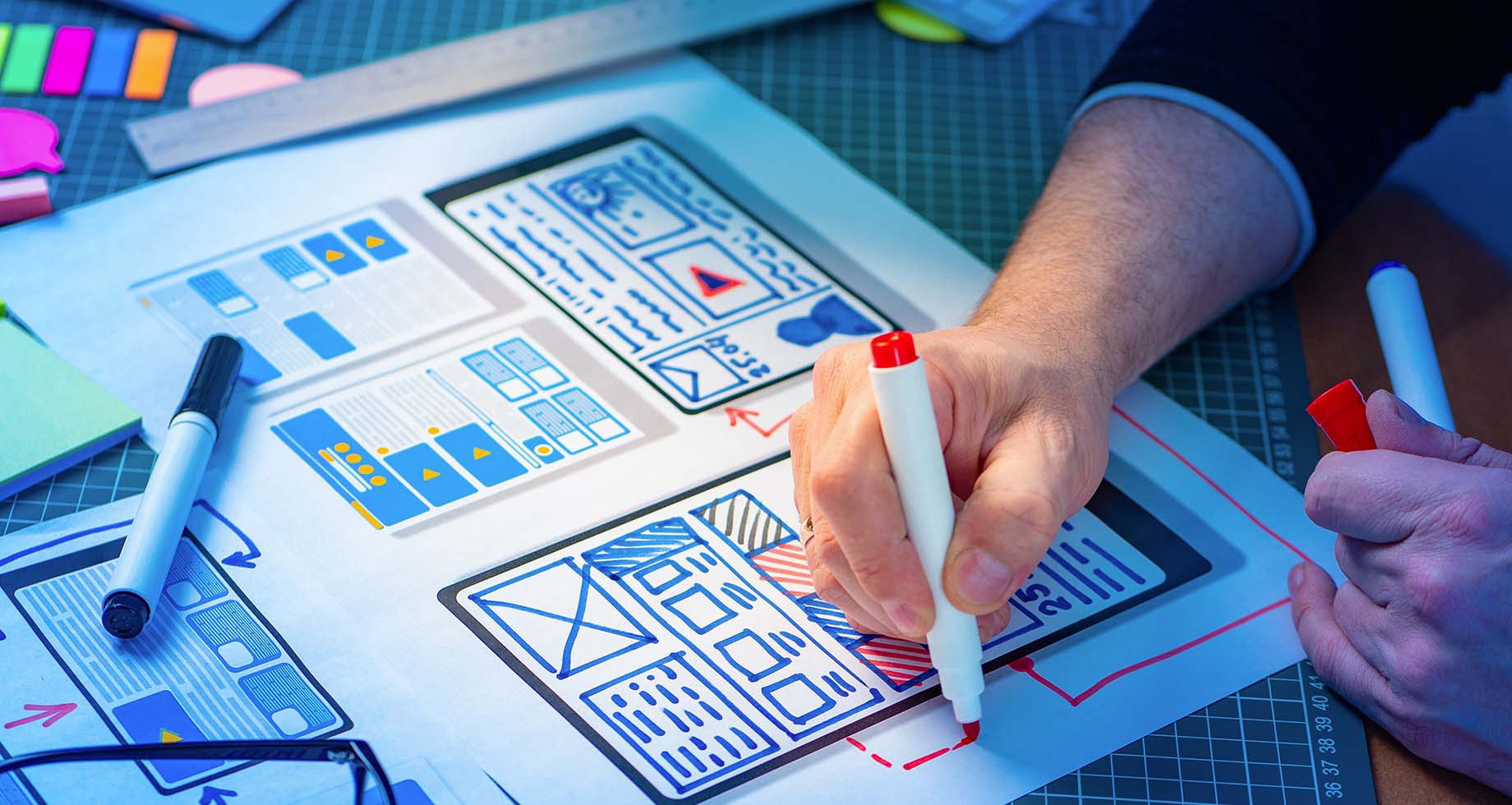A headless CMS is a future-proof technology that offers organizations many benefits. It removes the main complications and limitations of your current e-commerce website and provides more flexibility, ease of use, and ultimately savings. Your marketing team will also become less dependent on the IT department, which means that it can switch more quickly. All this gives you a huge competitive advantage. So what are you waiting for?
There is a lot to consider if you want a new e-commerce environment, especially if you also want to integrate your shop with your other channels. A crucial – and difficult – choice concerns the technology of your new webshop.
The chosen technology has a major influence on achieving growth objectives and the possibilities for your digital transformation. It is therefore important to think carefully about this, especially with a view to your long-term strategy.
Nowadays, e-commerce sites are often still made in one application. So there is one technology for the front-end, the content management system (CMS), and the link with external applications. As a result, you quickly run into limitations and problems when adding functions and making connections with other applications. This way you have an outdated webshop in no time.
By opting for a headless architecture in which the front-end is disconnected from the back-end – there is maximum freedom of choice. The back can be linked to almost any CMS or sales channel so that B2B can finally offer a B2C experience to customers. This way you offer your customers the front-end experience they deserve.
Future proof
But headless commerce also offers advantages for the organization itself. This way you can always continue to develop your e-commerce website so that you remain future-proof. You also choose which technologies you work with. You know best what works and what doesn’t within your organization and you will not just want to part with the applications you work with.
The integrations are made via APIs (Application Programming Interfaces), which standardize communication between applications. APIs are also modular and reusable, which speeds up the development process. This way you can immediately anticipate changing markets, business opportunities, and new technical requirements, without the underlying functionality being completely and independently adjusted.
Our customers choose their own headless CMS for their commerce back-end, such as Propeller – the best-of-breed back-end platform for all B2B functionalities. The front-end, the visible layer of your e-commerce site, is implemented and linked to your back-end by front-end developers. Propeller works with a partner network for this.
Which CMS you choose depends on the organization’s strategy for the Experience Layer, the software layer for providing, managing, and optimizing consistent customer experiences, across every digital touchpoint. This does not only concern the webshop, but also other channels, such as apps, social media, digital signs, and even physical stores.
Underneath the Experience Layer, the Commerce and Content blocks feed the aforementioned channels. That is no longer fragmented. In this way, you determine the tone of voice of your organization with an integrated approach, ensure presence everywhere and optimize your marketing strategy.
Three options for Experience Layers
When it comes to the Experience Layer, there are three options. An attractive option is a headless CMS for content for webshops, apps, and in-store. You have to develop the entire web front-end yourself, making this option particularly suitable for tech-heavy teams. There is a lot of switching with front-end developers and there are relatively often people with that specific knowledge in their own marketing team.
Commonly used CMS’s for this option are Contentful and Storyblok. The latter hybrid CMS enables developers and marketers to deliver powerful content experiences on any digital platform. Marketers love the unique combination of visual editing tools and customizable content blocks, software developers love the modern headless architecture so they can quickly build digital platforms.
An integrated CMS for content and website management can be seen as a light version of the option described above. The focus is mainly on content for the webshop and APIs ensure the transfer of the content to other channels such as apps and in-store. The worldwide most used CMS for this option is WordPress.
Examples of organizations that use WordPress are Forbes, The New York Times, Techcrunch, VW, Sony, UPS, and Reuters. This option is particularly suitable for lean & mean teams. You do not need to have your own front-end developers in your marketing team.
The main advantage over traditional webshops is that there is no longer a vendor lock-in. So you are no longer dependent on a particular supplier or technology and you can later migrate to a headless CMS relatively easily. This option is often used by organizations that do not want to switch to a headless CMS in a big bang, but step by step.
The third option is a digital experience platform with CMS for all content. This option is the most advanced. All data is collected and analyzed to optimize decision-making. The content for all channels (e-commerce site, apps, and in-store) is personalized based on that data and sometimes even placed automatically. AI is used for this. You can also use the platform for template management.
This option is suitable for marketing-oriented and tech-savvy teams, who want to lead the way. Examples of such CMS’s are Sitecore and Bloomreach.
‘Head in the sand’
The last option is still a ‘head in the sand’ approach for many organizations, but in our view, it has the future. People will have to get used to relinquishing control and relying on technology when it comes to optimizing their content marketing. Like all changes, this takes time. But in the end, your marketing department will have more time to focus on strategy and other high-value activities.
Propeller also supports any CMS, as it is a headless platform. Whichever option you choose, it makes sense to invest in headless now and in the future. It is an investment in money and time, but in the long run, it yields more: optimal use of the right content for every channel, more efficiency, satisfied customers, satisfied employees, and ultimately more turnover and competitive advantage. And who doesn’t want that?






